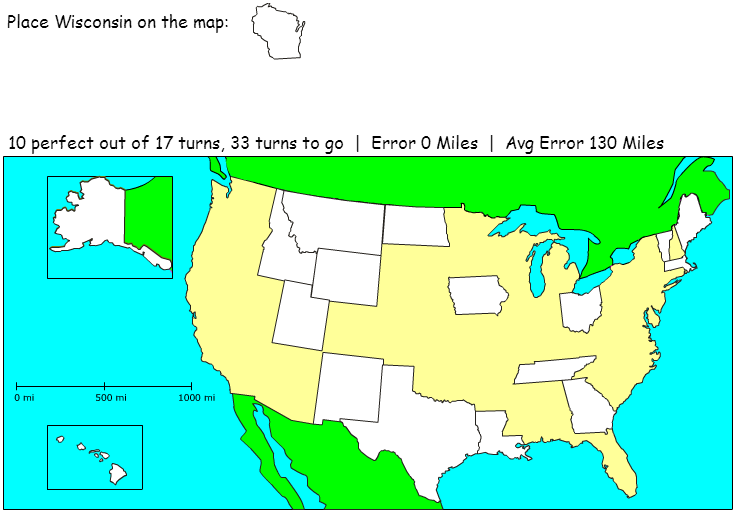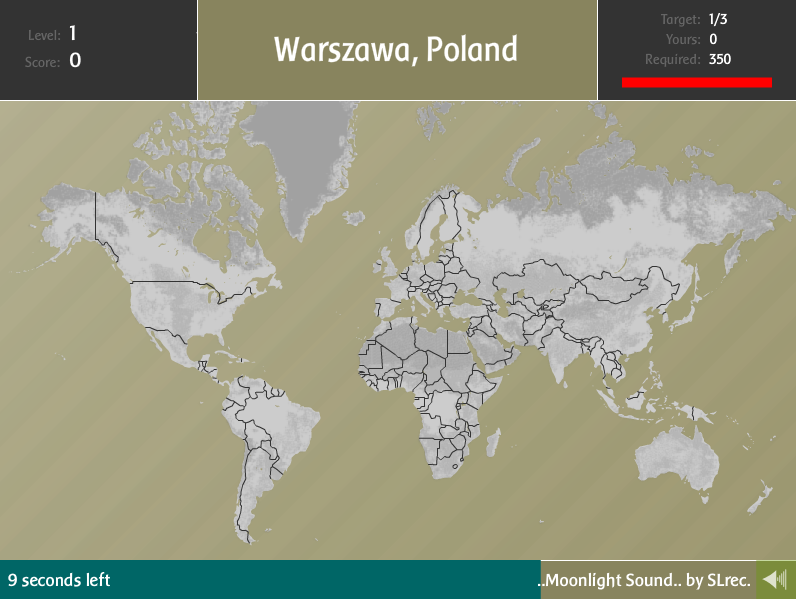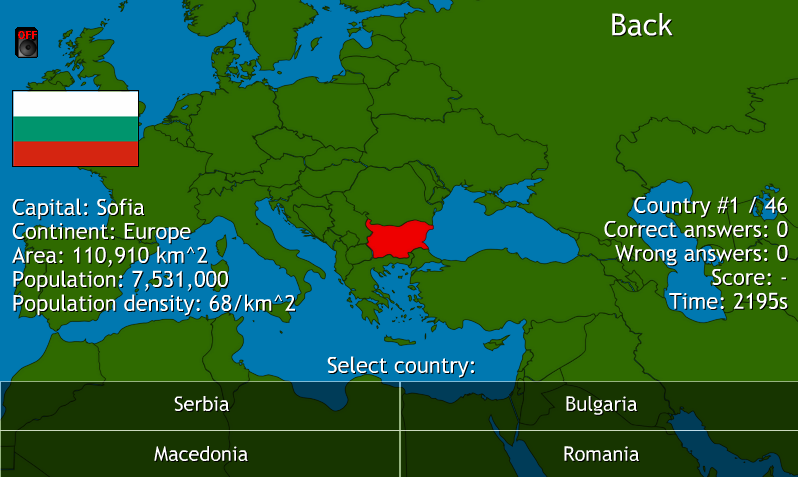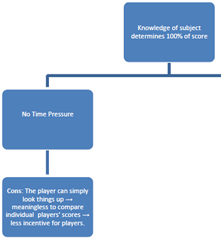50 states is a free to play browser game by Sheppard Software.
What does it teach?
It teaches you the location of the 50 U.S. states.
What do you do?
Among bite-sized geography games there seems to be three sub-genres:
- map quizzes (e.g. World Countries Quiz)
- pins-in-corkboard-maps (e.g. Globetrotter XL)
- jigsaw maps (e.g. this game)
I tried to trace the origin of the jigsaw map genre, gave it my best effort, got more and more overwhelmed and opted to limit myself to the States-of-America sub-sub-niche. Even so, I eventually had to throw in the towel. There are a myriad of them and many lack both credits and copyright year.
50 States is quite typical and works like this: You are presented with an empty map of the USA. Only the borders to Canada and Mexico are visible – there are no state borders, no cities, and no geological markers. You are then handed a random state tile which you try to drag and drop on its correct location. If you succeed the state stays on the map.
The game, like any jigsaw puzzle, thus gets progressively easier as more tiles fall in place during the 50 turns of each round. The states are handed out in a random order and some luck is therefore involved as it is much easier to pinpoint California or Florida than, say, Nebraska or Nevada on an empty map. Since early tiles influence the positioning of later tiles, this isn’t the kind of luck that evens out during a round (in contrast to a game like World Country Quiz).
It is wonderfully intuitive to play and promises to be almost as addictive and educational as Globetrotter XL. Unfortunately 50 States, and all other jigsaw maps that I have played, fail to deliver due to a few fundamental design flaws.
Do you learn anything?
Minor adjustments to the game would make for major improvements on its efficacy as a learning tool and a much more fun game. I’ll go through them one by one.
Number of tiles
A common way of analyzing gameplay is to look at the number of “meaningful choices” or “interesting decisions” available to the player at any given time. From this perspective the jigsaw mechanic in 50 States is a missed opportunity to expand the player’s palette of choices. The Jigsaw mechanic makes the game easier and easier as a round progresses, but it cannot be used tactically as you are only handed one tile at a time. Your only option each turn is to position the given tile as accurately as possible (there are a lot, say 125 000, of pixel coordinates to choose from, but that isn’t an “interesting” decision as there isn’t anything to contemplate – no risks, no rewards, no trade-offs ). The tiles therefore add nothing to gameplay. Ironically enough, the presence of puzzle tiles doesn’t present a puzzle mechanic to the game (looking at our typology, the game consequently belongs primarily to the leftmost category, though some luck is involved due to the random order of the tiles).
If instead you were handed 3-4 tiles each round, the luck factor would be reduced while a tactical puzzle mechanic would come into play as you now would have another choice to make: “what tile should I use?” in addition to “where should I position it?”.
Some jigsaw map games, like Place the State, take the opposite approach and present the player with all the tiles at once. This is as bad, perhaps worse, as it wholly eliminates the luck factor and in practice forces you make the exact same sequence of choices every single round: you choose the tiles you find easy first, the harder ones later, and the hardest last.
Score
The scoring system is a mess. At the end of a round your performance is evaluated by three different numbers:
- Score
- Average error in miles
- Total time
This is too much information and downright confusing – is a score of 76 % with an average error of 59 miles better than a score of 82 % with an average error of 97 miles? Instinctively “score” seems to be the most authoritative mark of your performance but it really isn’t. The score just gives you the percent of states that you pinpointed perfectly at first try. If you were 50 or 2000 miles off in your misses doesn’t matter. That is, “average error” doesn’t contribute to “score” – only “error = 0” contributes to “score”. On the other hand, all errors irrespective of size (including “error = 0”) contributes to “average error”. In other words: score doesnt’ contain average error, but average error contains score. This suggests that average error is a fairer assessment of your knowledge. Of course it also depends on how much you value perfection (that, by the way, ought to depend on the subject) but I would argue that it is much more impressive to locate Colorado within 50 miles on an empty map than getting Hawaii pixel perfect.
And as expected I found a better correlation between how many times I played the game and less average distance, than between times played and higher score.
The “total time” is pretty much a superfluous number as it doesn’t affect anything and there is no time pressure whatsoever. Ideally time should affect score the way it does in Globetrotter XL. As a matter of fact, the jigsaw map genre would be much improved if the scoring system was transplanted wholesale from the pins-in-corkboard-map genre.
State names
The learning could further be vastly augmented if the tiles were given text labels once put in place. This would serve as a constant reminder of the state names and provide geographical rather than just geometrical context when positioning later tiles. As it is now, you tend to
- forget the names of the states the minute you drop them off
- only look at the visual shapes for hints.
Preferably, major cities and geological information like mountains and rivers should also complete the tiles after they are put in place.
Pros
Very easy to get into and pretty fun at first …
Cons
… but it soon gets repetitious and increasingly hard to improve your score and knowledge thanks to some truly careless design decisions.
Additional information
This geography game genre probably originates in real, physical, jigsaw puzzle/board game hybrids.
As previously mentioned there are countless clones. Chris Basmajian of Leadpipe Games, for example, made an almost identical game with the same name in 2007. They are so similar (all instructions are identically phrased) that I initially didn’t think it was a clone but rather an earlier version of Sheppard Software’s game as it lacks SFX and has slightly less refined graphics. But considering that Sheppard Software has been developing geography game for a long while, I now suspect Basmajian’s game is a rip-off, though it is entirely possible that Basmajian created an exclusive version for Sheppard Software, using their stock SFX. Anyhow, he went on and created another clone, Place it USA (2013) with improved artwork (and annoying dropshadows) by Robotjam.
Lots more jigsaw map games can be found on Coolmath-Games and on Owl & Mouse.




